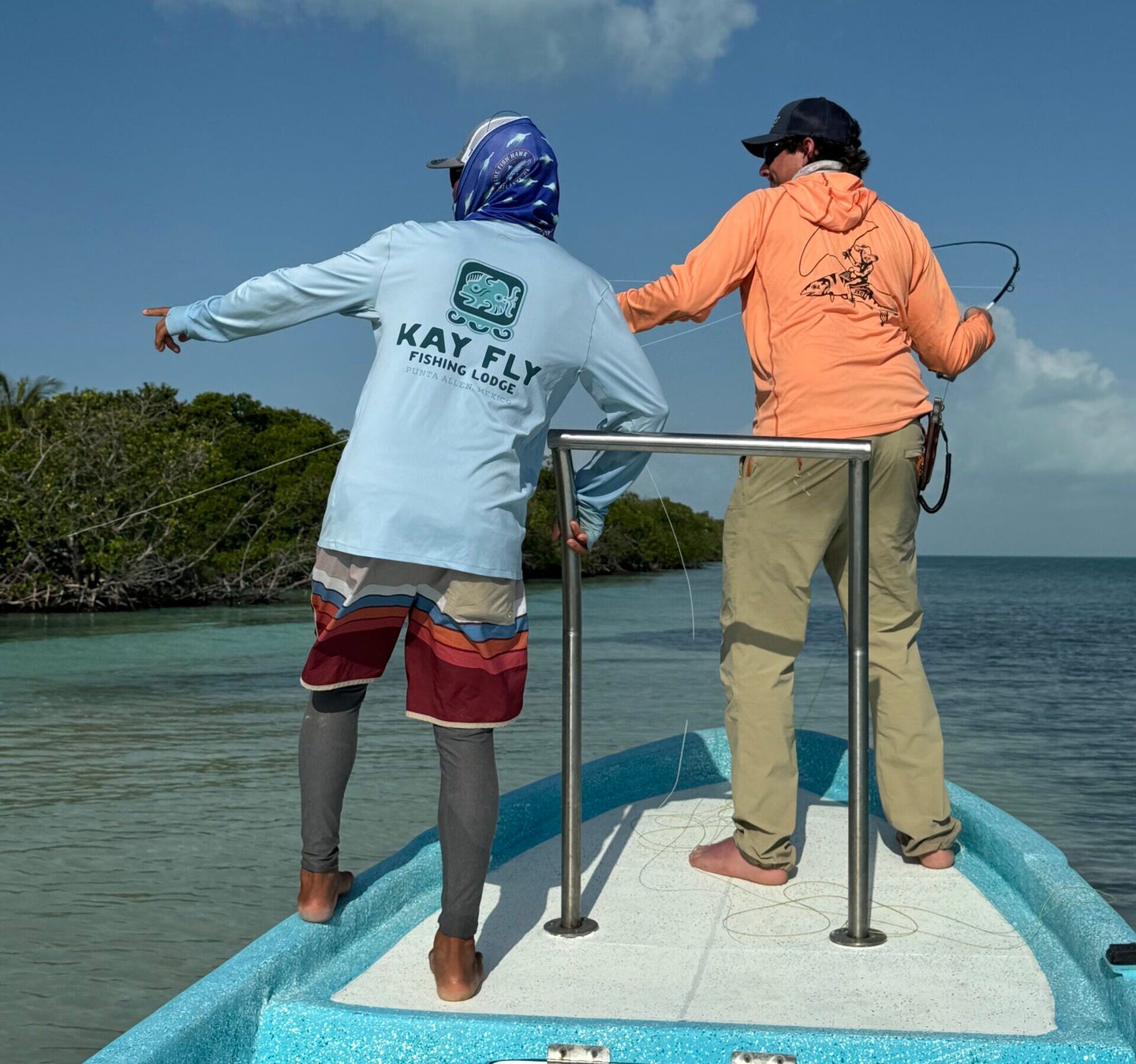Battling the Wind on the Saltwater Flats

T. Edward Nickens
Jack looks over his left shoulder, and fixes me with a shaking-my-head grimace. “Honking,” he says. “I’m pretty sure that’s the meteorological term for this.”
“It’s a couple of levels up from howling,” I reply. Twenty-five mph winds have blown up an Ascension Bay chop that rocks the panga. Jack holds a 9-weight saltwater fly rod. I can hear the wind whistling through the guides. “Blowing the dog off the chain?” I say. “Turning the porch cats inside-out? There are lots of ways to describe this slop. I think you can take your pick.”
Big wind is the last thing you want on a saltwater fly-fishing trip. There might be some debate about what is worse, wind or clouds—especially if the game you’re playing is sight-fishing the shallows. Clouds make it difficult to see fish on the flats, no doubt. Without the penetrating rays of the sun, the water turns chalky and opaque. To find fish you have to rely on pushes of fish, or mud that tell you where the fish were, or blind-casting into places where the fish might never have been.
But at least you can cast. When the wind is ripping, everything about fly fishing is more difficult.
At the time, however, Jack and I weren’t engaged in the clouds vs. wind debate. Because we had clouds, too.
Jack Nickens shows of a nice jack crevalle he caught in Ascension Bay. T. Edward Nickens
Wind Tunnel
You come to a place like Ascension Bay, 100 miles south of Cancun, on the Atlantic coast of Mexico’s Yucatan Peninsula, because it is one of the best places in the world to fly fish. We’re in the remote waters of the massive 2,000-square-mile Sian Ka’an Biosphere Reserve, where the Big Three of permit, tarpon, and bonefish thrive. There are monster jack crevalle here, and serious barracuda, and worlds of snook. All targets for the fly, none of them easy. I came to fish, surely, but also to learn how to fish better in the big leagues. Or to continue learning.
At dinner the night before, Ebon Robinson looked at the weather forecast, and chewed his lip. Ebon is hosting the trip with his partner, Hilary Hutcheson, so he has more reason than most of our gang to obsess over the weather. “Ugh,” he said. “Looks like a bit more W tomorrow.” It was as if he didn’t even want to say the entire word, like mentioning “wind” in such a place is akin to giving the weather gods a wedgie. A curse unto itself. You don’t tempt fate. You don’t say the word.
Instead, you fish.
The author releases a bonefish. T. Edward Nickens
A windy day with a fly rod in hand is only a bust if you let it be, especially in a place like this. If the day gives you clear skies and clear water and just enough breeze to hold down the bugs, count your blessings and fish through lunch. If the Fish Gods decree wind, or clouds, or, as is too often the case, both, you count the blessing of being on the bow of a boat in a gorgeous wild corner of the world, and tighten your loops.
On the bow, Jack lowered his cast and fought the temptation to overpower the cast. The proper way to cast into the wind is to tighten the loop of the fly line, minimizing air resistance. And focus on line speed. But there’s a delicate balance between giving the rod the required oomph, and oomphing too much. It’s a balance I’ve yet to master. It’s a balance Jack is learning to strike.
Traveling to fish is the ultimate exercise in learning to deal with whatever comes your way. If all you get is the chance to learn—if that’s what the day gives you, in a place like this—you are grateful and you pay attention and you don’t waste a moment. Because the keenness of the blade you sharpen on a day like this might be sharp enough to cut the W down to size on the next day, and the next.
The post Battling the Wind on the Saltwater Flats appeared first on Field & Stream.
Articles may contain affiliate links which enable us to share in the revenue of any purchases made.
